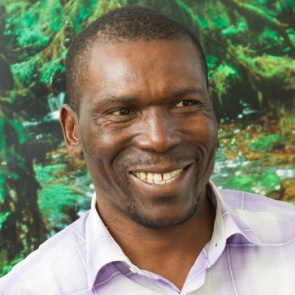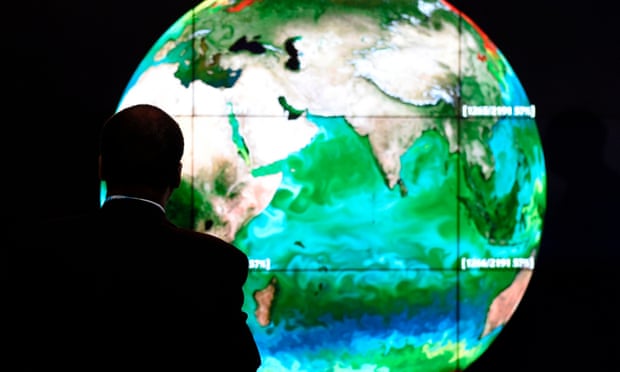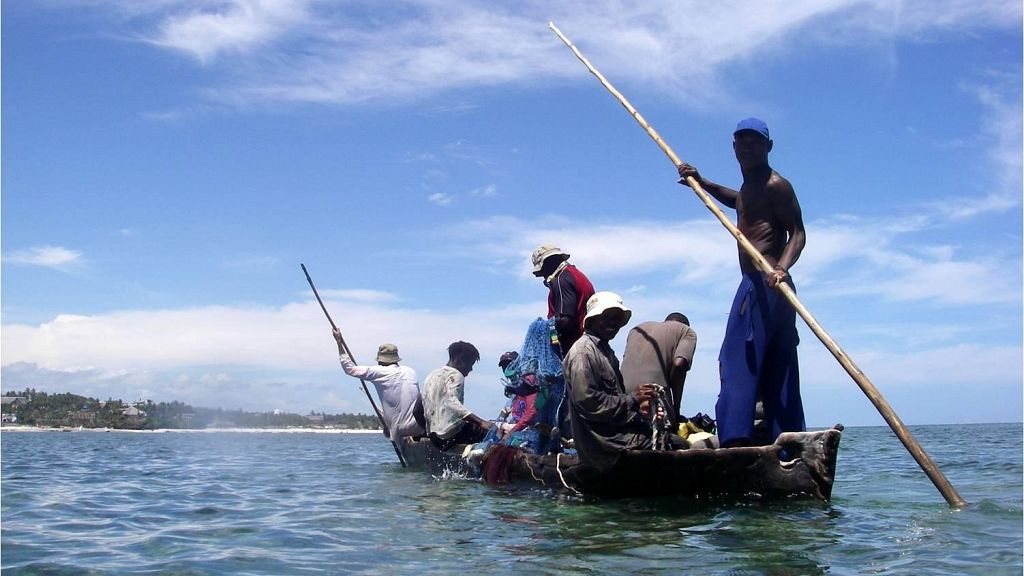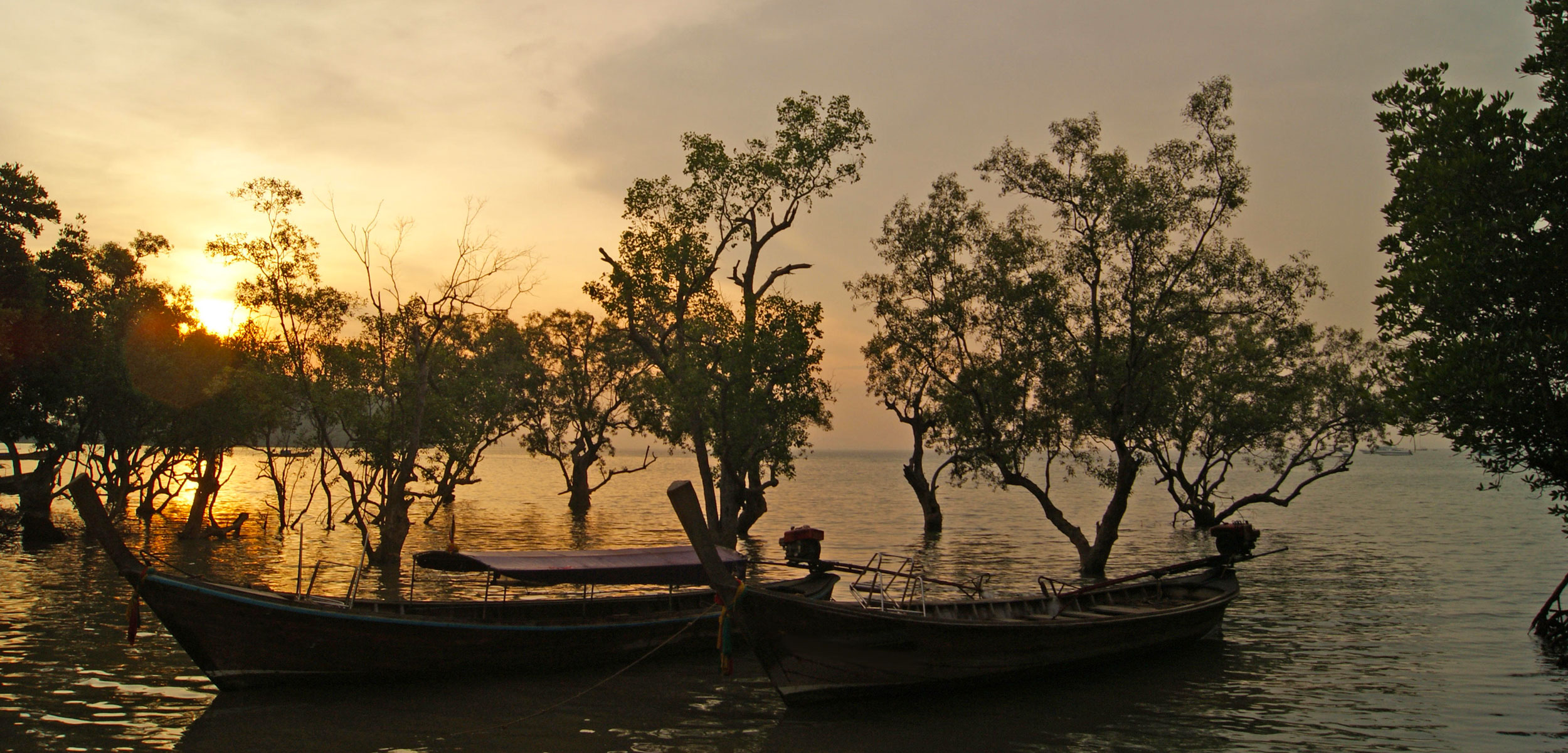|
The MAP News |
|
|
FEATURE STORY
Still time to make your 2017 Tax-Deductible Donation to MAP!
Make a difference for coastal communities Families who call mangroves home need your support “I still remember that day we got to work together to improve the hydrology at the restoration site. Many people dug in the pond, working together and I could see that they felt that the land had returned to them again. It made me so happy. I felt like despite all the problems we faced we finally felt united in the village.” Ms. Ladda Ardharn (Pink), the youth group leader at Ban Talae Nok, was instrumental in the success of the project there and pursued solutions when the land tenure issue gridlocked the project from proceeding. At one point, she organized a petition to demand their land back. It was not easy for a young woman to take a strong and active role against an influential male community member. She and the other members of the youth group had the motivation it takes to make real, lasting change – and you can give them the technical support and opportunity to make it happen. “Since we started working on this restoration together, the people of my community have hope again.” Your contribution is about more than money – it is about working together with villagers like Pink, and empowering young people to become caretakers of their environments. It is about partnering to address global challenges with local solutions. You belong to a global mangrove community, and your investment in women like Pink will mean a brighter and more secure future for us all. The families who call mangroves home need your support. Please give a gift by December 31. READ MORE SPECIAL MALDIVES REPORT 2,500 trees to be cut down for Kulhudhuffushi airport MALDIVES - The Kulhudhuffushi council expects about 2,500 trees and plants to be felled or removed from the island’s mangrove forest for the construction of an airport. With dredging and land reclamation expected to begin in early November, the wetland area in the island’s northern end is now under the authority of the Regional Airports department of the tourism ministry, the island council president Abdul Latheef Hassan told the Maldives Independent. “It is up to Regional Airports to decide when to cut down trees in the kulhi,” he said by phone Monday morning. “We shared the land use plan of Kulhudhuffushi that includes the airport with the people before the end of July. We’ve also counted and marked the coconut palm trees two months ago after a request from the housing ministry and opened for complaints regarding the procedure.” Latheef added that the council has also contacted families who would have to move from the airport construction site. READ MORE Maldives switches focus from climate threat to mass tourism  MALDIVES - When Mohamed Nasheed, the young, first democratically elected president of the Maldives, said in 2008 that he was seeking to buy a new homeland to save his people from being inundated by rising sea levels, it made the country of 1,200 coral islands the moral leader in the UN climate talks and helped persuade rich countries to act. This week the Maldives, under new president Abdulla Yameen, apparently changed environmental tack, saying that mass tourism and mega-developments rather than solar power and carbon neutrality would enable it to adapt itself to climate change and give its young population hope for the future. As rumours abound that Yameen has been negotiating to sell an entire atoll with 19 coral islands and dozens of reefs and lagoons to the Saudi royal family for $10bn (£8bn), his ministers outlined plans to geo-engineer artificial islands, relocate populations and attract millions more tourists by creating 50 more resorts. READ MORE International experts called on Maldives to designate HDh. Keylakunu a 'Mangrove Wild Reserve', in 2001! MALDIVES - n the Maldivian government to declare Keylakunu island of Haa Dhaalu atoll as a 'Mangrove Wild Reserve'. Amid its efforts to create awareness on the importance of the uninhabited island, RaajjeTV has obtained a copy of a letter sent by ISME's Executive Secretary Shigeyuki Baba, addressed to Maldives' then Director of Environmental Affairs, recommending that Keylakunu island is designated as a Wild Mangrove Reserve in the Maldives 'not only for our generation but also future generations'. In the letter, Professor Shigeyuki noted that he, along with a team from ISME, had visited mangrove forests in Kumundhoo, Neykurendhoo and Keylakunu islands in Haa Dhaalu atolls and Baarah island in Haa Alifu. READ MORE HDh. Keylakunu is one of the few places that show the Maldives' biodiversity MALDIVES - Ecocare Maldives has said that Keylakunu Island of Haa Dhaalu atoll 'is one of a kind' and that 'we should be proud' of it. The organization's Director of Advocacy, Maeed Mohamed Zahir emphasized that the Avicennia marina forest found in Keylakunu cannot be found anywhere else in the world, especially not in an island ecosystem. Noting that 'there are just a few places in the Maldives that shows its rich biodiversity,' Maeed said that Keylakunu is one such place, highlighting the importance of protecting the island. He also noted that international experts had, back in the early 2000s, recommended the Maldivian government to declare Keylakunu a biosphere reserve. READ MORE Conservation and Management of Maldivian Mangrove Habitats – Baseline Study MALDIVES - Maldives is known for its coral reefs and beaches; mangrove ecosystems in Maldives are over-shadowed by these environments and oftentimes neglected and under constant anthropogenic threats despite its crucial ecological and geomorphological function to this small island nation. This study aims at establishing a baseline of environmental conditions of significant mangrove habitats throughout the country. Data and information collected via this study will provide a foundation for conservation efforts to build upon and help future environmental monitoring of said environments. READ MORE ASIA 720 volunteers clean up mangroves along Bandra's Carter Road of 3,000 kg trash  INDIA - The Maharashtra State Mangrove Cell began its city-wide 'Clean Mangrove' campaign on Saturday, and started with removing 3,000 kg garbage from Carter Road in Bandra. In all, 720 volunteers, including students from Rizvi College, St Andrew High School, St Pauls Institute of Communication Education, and RD National College, local residents, and cell members participated in the drive. The Mangrove Cleanup drive is expected to continue until May 31, 2018, and eight locations - Dahisar, Borivli, Versova, Bandra, Sewri, Bhandup, Airoli, and Turbhe - have been identified. N Vasudevan, additional principal chief conservator of forest, along with senior officials were present at the event at Carter Road. He said: "This will be a regular clean-up drive and will be done on a rotational basis. On weekdays, our officers and workers from the municipal corporation will clean these areas and on weekends, volunteers will supplement these efforts. The idea is to clear the trash near the roots of the trees." READ MORE AFRICA Nasako Besingi released  CAMEROON - On 27 November 2017, the Examining Military Judge in Buea, Cameroon, officially dropped all charges and signed the release order for human rights defender Nasako Besingi, who was subsequently released following over two months in detention. Nasako Besingi is a human rights defender and the director of Struggle to Economize the Future Environment – SEFE, a non-governmental organisation based in the village of Mundemba, Ndian Division, Cameroon, which has asserted the land rights of local communities in the context of the development of palm oil plantations. Nasako Besingi has been leading his community in the protests against the development of palm oil plantations by the American agribusiness company Herakles Farm. Most recently, the human rights defender has vehemently condemned the situation with regards to the human rights violations in context of the current crises in the Anglophone regions of Cameroon. READ MORE Jury still out on huge mangrove regeneration project in Senegal  SENEGAL - Climate change (lower rainfall, rising sea levels, and harsh droughts) coupled with unsustainable human exploitation has seen some 40 percent of Senegal’s mangrove cover lost since the 1970s. It’s a region of rich biodiversity: some 2,000 species of fish, molluscs, and crustaceans live among the roots and mud of the mangroves. For Ablaye Marone, who works as an volunteer guide and ranger in the national park that covers 76,000 of the delta’s 146,000 hectares, it’s a lot more than that. He told IRIN that replanting schemes are “a question of survival”. “We make a living only from mangroves,” he explained. “Take me for example. Aside from activities as a guard, I place beehives in the mangroves to collect honey. I make a lot of money doing this that allows me to make ends meet. If there were no more mangroves, there would be no more bees.” Adjarata Diouf, who also lives in Marone’s village of Bagadadji, explained how the mangroves “provide an essential source of revenue for women here”. “They offer ideal conditions for the reproduction of fish and shellfish. Our main economic activity is harvesting oysters, from which we make a significant revenue,” she told IRIN. READ MORE AMERICA The Truth about Shrimp Rings  CANADA - Ready-to-eat shrimp rings have had their fair share of mud thrown at them. Over the years, social justice and environmental crusaders have pointed out the problems with these cheap mainstays of December holiday parties in North America. Shrimp rings are emblematic of the pervasiveness of budget shrimp in grocery stores and at restaurants, yet they remain as popular as ever. The world consumes more than eight million tonnes of shrimp annually, and farmed shrimp makes up a bigger fraction every year. Most of the shrimp exported across the world come from Asia and Latin America—China, Vietnam, India, Thailand, Indonesia, and Ecuador are major producers. There’s nothing small about the shrimp business, including its impact on vulnerable people and environments. It’s always a good time to just say no to the ring of injustice, pollution, and coastal degradation. Share some of these facts while lingering with friends and acquaintances over the holiday trough, a communal reminder that there are happier things to eat over the holidays. But don’t despair, there is a way to change this narrative, one story at a time. READ MORE Amazonian fish need tropical forests to survive  BRAZIL - Even fish can be treehuggers. In a large study published recently, fisheries ecologists at Virginia Tech have found a link between tropical forest loss in the Amazon and declines in freshwater fish populations. Their work could inspire new policy protections for tropical forests on the Amazon river floodplain, where fishing is a major source of income and food. Virginia Tech’s Leandro Castello’s team reports in the journal Fish and Fisheries that lakes in the Amazon River floodplain with a larger forest amount had a greater fishery yield, demonstrating a relationship between the forest and fish. Forest survival accounted for 85 percent of fishery yields for the majority of species examined. Prior work found 56 percent of the forest in these areas were lost to clearing for plantations and cattle ranching in recent years. Many scientists are concerned about drought, carbon emissions and degraded water quality. But Castello cautions that the problem extend beyond the land. “Everyone talks about deforestation as a terrestrial issue – carbon stock, climate change. This study shows that in river basins such as the Amazon, deforestation an issue of food security for the local people,” Castello said. READ MORE GLOBAL World Bank to end financial support for oil and gas extraction  GLOBAL - The World Bank will end its financial support for oil and gas extraction within the next two years in response to the growing threat posed by climate change. In a statement that delighted campaigners opposed to fossil fuels, the Bank used a conference in Paris to announce that it “will no longer finance upstream oil and gas” after 2019. The Bank ceased lending for coal-fired power stations in 2010 but has been under pressure from lobby groups also to halt the $1bn (£750m) a year it has been lending for oil and gas in developing countries. The Bank said it saw the need to change the way it was operating in a “rapidly changing world”, adding that it was on course to have 28% of its lending going to climate action by 2020. At present, 1-2% of the Bank’s $280bn portfolio is accounted for by oil and gas projects. In exceptional circumstances, the Bank said it would consider lending for oil and gas projects in the very poorest countries but only where it helped the poor get access to energy and the project did not conflict with commitments to reduce greenhouse gases made in the 2015 Paris climate change accord. READ MORE A Productivity Paradox In Very Wet Mangrove Forests Of The Neotropics? GLOBAL - A group of researchers from Colombia (Universidad del Valle) and Germany (Leibniz Centre for Tropical Marine Research-ZMT) joined efforts to produce an ecosystem model of a mangrove area in the Panama Bight eco-region synthesizing for the first time knowledge from a particular system – Bahía Málaga in the Colombian Pacific coast – collected in the last ~10 years. The mangroves here are probably the wettest in the world, – rainfall can easily reach 7 m every year -, and represent an especially interesting system to investigate which factors determine the productivity of a mangrove ecosystem. The resulting EwE model of Bahía Málaga indicated that mangrove trees contributed most to the biomass of the whole system (96%) and that secondary production in the form of macrobenthos (crabs, cockles) and fish biomass was extremely low compared to that of other mangrove systems. The transfer of energy through trophic levels seems to be very low in this system being the reason for an impoverished biomass of primary and secondary order consumers. The characteristics of this system indicate that despite being little affected by anthropogenic activities, any increase in such activities (i.e. fishing) may severely affect the capacity of the mangrove to deliver food to human populations. The astounding nature of this mangrove forest contrasts with the apparent natural scarcity of other biotic living forms in this system in an unexpected productivity paradox. READ MORE |
ACTION ALERTSPresident Abdulla Yameen: Stop Destruction of Kulhudhuffushi Mangroves! CLICK HERE
|
Mangrove Action ProjectClick here to view past newsletters |
|
Search News Archive
Thursday, December 21, 2017
MAP NEWS Issue 432 - Dec 23, 2017
Friday, December 8, 2017
MAP News Issue 431 Dec 9, 2017
PREVIEW VERSION
|
The MAP News
431st Edition Dec. 2, 2017 |
|
|
FEATURE STORY
Forests can beat humans at restoration, new study finds
 GLOBAL - When it comes to restoring deforested landscapes, letting them regenerate naturally through passive means is generally cheaper than human-driven, so-called “active,” restoration techniques like re-planting. But a new study finds it can actually also be more effective in tropical ecosystems. The authors say that letting tropical forests regenerate by themselves could help further large-scale restoration goals while at the same time saving money that could help scale-up forest restoration worldwide. The study, published recently in Science Advances, analyzed the findings from 133 other studies conducted across 115 landscapes to compare natural and active regeneration of tropical forests. Its results indicate natural restoration techniques were more successful than active restoration at restoring the biodiversity levels of birds, plants, and invertebrates, as well as vegetation structure. Specifically, the study found biodiversity in naturally regenerated landscapes was 34 percent to 56 percent higher and vegetation structure 19 percent to 56 percent higher than in areas that had been actively restored. “These findings suggest that lower cost approaches to restoring biodiversity and vegetation structure in tropical forests can actually be more effective than active restoration,” study lead author Renato Crouzeilles, an associate researcher at the International Institute for Sustainability, said. READ MORE AFRICA Protecting corals and mangroves, Kenya's fishermen net cash and more fish  KENYA - Fishing communities in Kenya’s southern coast are taking steps to conserve marine life that is under threat, by creating underwater gardens in the Indian Ocean. Fishermen and other residents in Wasini Island hope that they can replace destroyed coral reefs with new ones, to help harbor fish and draw hundreds of thousands of tourists who come to visit Kenya’s coast each year. The project was started in 2014 and the fishermen were later trained by conservationists on how to cultivate the coral gardens. Boat operators help fund the program while divers go down to the ocean floor to cement the corals in place. The large-scale collapse of coral reefs has exposed Kenya to increased erosion and the loss of fisheries. Reefs provide home for marine life. The eastern African countries of Mozambique, Tanzania and Somalia as well as the Indian Ocean island nations of Seychelles, Mauritius and Comoros are also affected. READ MORE ASIA Over 100 NGOs raise concern over plight of environmental defenders PHILIPPINES - Declaring “it is not a crime to defend the environment,” a total of 116 non-government organizations, social movements, and other environmental groups came out with a unified statement raising concern over the worsening human rights situation faced by environmental defenders in the Philippines, declared the third deadliest country in the world and deadliest in Asia in the 2017 Global Witness Report on Killings of Environmental and Land Defenders. Hailing from 25 different countries, the groups noted that “in just more than a year under the current administration of President Rodrigo Duterte in the Philippines, at least 42 environmental defenders have been killed, 240 have been slapped with harassment lawsuits, and at least 18,263 have been forcibly displaced because of their resistance to destructive projects.” The statement came out amid increasingly atrocious human rights violations perpetrated against Filipino environmental defenders and other activists over the past two weeks. Incidents of extrajudicial killings, illegal arrests, enforced disappearances, and forced evacuations occurred in just over the past week in the provinces of Mindoro Oriental, Batangas, Agusan del Sur, Compostela Valley, and Surigao del Sur. Affected communities mainly confronted mining, plantation, and coal issues. The groups observed that “civilians are systematically targeted by bloody military operations under an increasingly aggressive ‘Oplan Kapayapaan’ counter insurgency program and the dark shadow of Martial Law,” noting the recent systematic efforts of justifying killings and militarization by accusing environmental defenders as armed communist rebels or sympathizers. READ MORE Maldives planning to convert mangroves forest to an airport MALDIVES - The island of Kulhudhuffushi hosts the 7th largest mangrove in the Maldives. It is home to 8 species of true mangrove plants, 42 associated plant species and supports the entire ecosystem of the island. This white clay mangrove is home to various migratory birds and fishes. In addition, the mangrove ecosystem also provide livelihood activities for over 400 women and their families in the island and is closely linked to the culture and heritage. However, the Government of Maldives is currently in the process of reclaiming the mangrove to build an airport to fulfill a presidential campaign pledge. The Government promises the airport will bring development to the island by creating jobs and stimulating economic growth. However, domestic airports in Maldives are an extremely expensive investment with low returns. Given the employment data from other airports in the country, it will create maximum 40‐100 jobs. On the other hand, if money is invested in essential services in the island such as tertiary medical services, higher education, eco tourism and better job opportunities will be created. Maldives is extremely vulnerable to climate change and mangroves play a key role in protection of coastal ecosystems. READ MORE Mangroves lack the genetic diversity to adapt to climate change  CHINA - Mangroves support coastal ecosystems around the world. In the tropics and subtropics, they rim coastlines and estuaries in thick green bands, providing shelter for everything from monkeys to Bengal tigers to critically endangered sloths. Considering their wide range and unique adaptations to saltwater environments, mangroves seem like an evolutionary success story. But the reality is that mangroves have surprisingly low genetic diversity, which will be a big problem as they attempt to adapt to changing conditions. New research suggests that mangroves may break rather than bend under the stress of the climatic changes to come. Suhua Shi, an evolutionary biologist at Sun Yat-sen University in Guangzhou, China, and her colleagues surveyed the genetic material of six of the world’s roughly 100 mangrove species, examining 26 populations around the Gulf of Thailand and China’s Hainan Island. The team found that within each species, mangroves are so low in genetic diversity that individual trees are essentially indistinguishable from one another. This means they will have less chance of adapting to a changing world than more diverse species. The finding is surprising, as mangroves seem like paragons of survival. READ MORE Community effort overcomes onslaught of the unsustainable shrimp industry INDIA - A firebrand conservationist, Appa Rao Allarpathi has been regarded as the Mangrove Man of India – a title he detests. He met me as a volunteer for the Fishing Cat Conservancy, the organisation that invited me to observe their compelling conservation and awareness work in the Krishna river delta. Appa Rao’s connection with this habitat began when his work as a consultant for telecommunication companies took him to the surrounding areas to survey locations for what he now says are ecologically-disastrous mobile communication towers. This left an indelible mark on him, as he began to see the destruction of the pristine forest cover of the Krishna district. Inspired to do something about this, he set out on his motorbike to investigate and research the fascinating mangrove ecology of the region… self-funded. What he saw amazed him – somehow, despite the challenges thrown at them by us, parcels of mangroves thrived. What is more, the ecosystems were home to an abundance of crustaceans, mammals and amphibians – an extraordinary array of biodiversity that depend on these relict wildernesses for their survival. He also began to see how Andhra Pradesh’s fisheries industry relied on the continuing health of the mangroves that serve as a nursery, breeding and feeding ground for fish. In the last decade, however, possibly three-quarters of the mangroves have been encroached upon by locals and outside investors hungry to set up still more ecologically-disastrous fish and shrimp farms. Large tracts of mangroves therefore continue to be razed brutally to the ground to make way for what can only be a very temporary shrimp industry. READ MORE AMERICAS Communities front and center at Fourth Mangrove Forum EL SALVADORE - Community groups from across El Salvador gathered November 8 for the Fourth National Mangrove Forum to discuss mangrove restoration policy and progress, sea turtle conservation, and community co-management of natural protected areas. The event brought together around 350 people from community organizations, NGOs, academia, and government agencies, with some traveling from the far reaches of the country to participate. Representatives of community organizations from across the Salvadoran coast as well as from the municipal, state, and national governments attended. Several local and national media outlets covered the event. The forum took place in the Community Center of Las Mesitas, a small village nestled in the mangrove forest of the Bay of Jiquilisco. The location was a departure from the previous three forums which took place in hotels in the capital city of San Salvador, far removed from the places and people being discussed. It was important to have the forum take place in the area where conservation work is being done and symbolized a sense of solidarity and recognition of community interests. The forum was also the first one to go “zero waste”: no single-use plastics were used for meals. READ MORE OCEANA Villagers plant mangroves in race against rising seas  FIJI - On a muddy beach, under the glaring Fijian sun, villagers living on the banks of Laucala Bay in the capital of Suva carefully plant neat rows of mangrove seedlings as holidaymakers and locals swim in the ocean in the distance. What started as a hobby for Jim Tuimoce and the small Korova community has now become a serious attempt to guard them against the effects of rising seas and protect their way of life. The Pacific Island nation is seen as particularly vulnerable to climate change, with some of its 300 low-lying islands susceptible to rising seas. “The land has been washed away over the past 20 years. We plant mangroves here to protect the soil from eroding more,” said Tuimoce, 28, who lives with seven families in this coastal village that still uses traditional canoes to fish. Global attention on mangroves has grown due to their effectiveness in absorbing atmospheric carbon, one of the main drivers of climate change, as well as sheltering fisheries and protecting against coastal erosion. READ MORE Adani coal mine 'devastating' for Australia AUSTRALIA - Australia - Farmers and environmentalists in Australia are waging a fierce battle to stop a new mega coal mine planned for the country's northeast from going ahead. Indian energy giant Adani Group has said it will break ground this month on the project which is expected to become one of the largest coal mines in the world. The company says the Carmichael mine, which has the backing of the Australian government, will bring jobs and deliver royalties that will benefit Australians. But those opposing the project believe it could wreak havoc on the environment. "If that Adani mine goes ahead, it's going to be devastating," farmer Bruce Currie told Al Jazeera's 101 East. The project was due to be launched on Friday, with Deputy Prime Minister Barnaby Joyce due to attend, but the ceremony was cancelled due to rain, according to an Adani spokesman. READ MORE GLOBAL Tropical deforestation is getting bigger, study finds  GLOBAL - As nations race to keep forests standing and the world from warming, scientists are trying to figure out what human activities are causing deforestation and how best to stop them. A study published last week in Environmental Research Letters lends some new insights, finding the majority of forest loss in the tropics is due to medium- and large-scale clearing – hallmarks of industrial agriculture. The researchers who authored the study say policy changes are needed to reduce deforestation for commodity crops like palm oil. For their study, researchers at Duke University in the U.S. analyzed tree cover loss data detected by satellites between 2001 and 2012 and compiled by the University of Maryland. They restricted their analysis to tropical areas as defined by the UN’s Food and Agriculture Organization (FAO). They then analyzed tree cover loss trends in respect to four deforestation class sizes: less than 10 hectares, 10 to 100 hectares, 100 to 1,000 hectares and more than 1,000 hectares. According to the FAO, household and other small-scale farms in tropical, developing nations tend to clear less than 10 hectares, so the authors used this number to define smallholder operations. The data indicate that in the tropics overall, deforestation increased 53 percent between 2001 and 2012, from an average of around 69,000 square kilometers (6.9 million hectares or 26,600 square miles) per year during the first half of their study period to 79,000 square kilometers per year during the last half. READ MORE |
ACTION ALERTS
President Abdulla Yameen: Stop Destruction of Kulhudhuffushi Mangroves! CLICK HERE
|
Mangrove Action ProjectClick here to view past newsletters |
|
Subscribe to:
Posts (Atom)
-
The community of adults and youth in Cayman Islands has come together recently to release a series of educational videos. Each is geared to...
-
By Alfredo Quarto, Program & Policy Director Co-founder, MAP There is a rather urgent situation concerning the bio-invasion of the Son...
-
By: Isabel Robinson, MAP Volunteer Intern Some months ago I decided to come to Thailand and do an internship in mangrove conservation, ...
MAP News Issue #596 = April 20, 2024
ENTRIES NOW OPEN! Mangrove Photography Awards 2024 10 Years Celebrating Mangroves GLOBAL - MAP has launched our 10th Mangrove Photograp...









